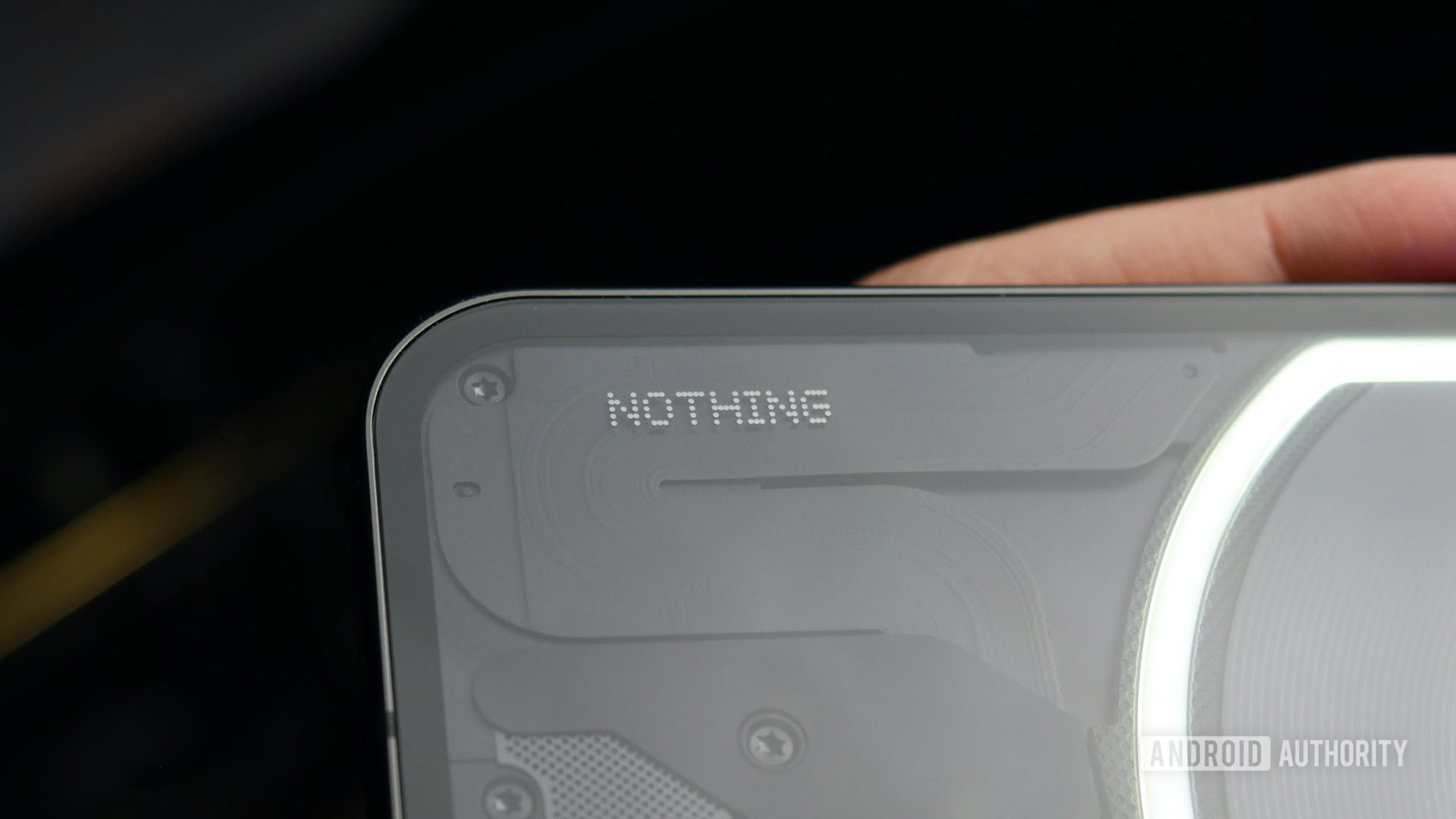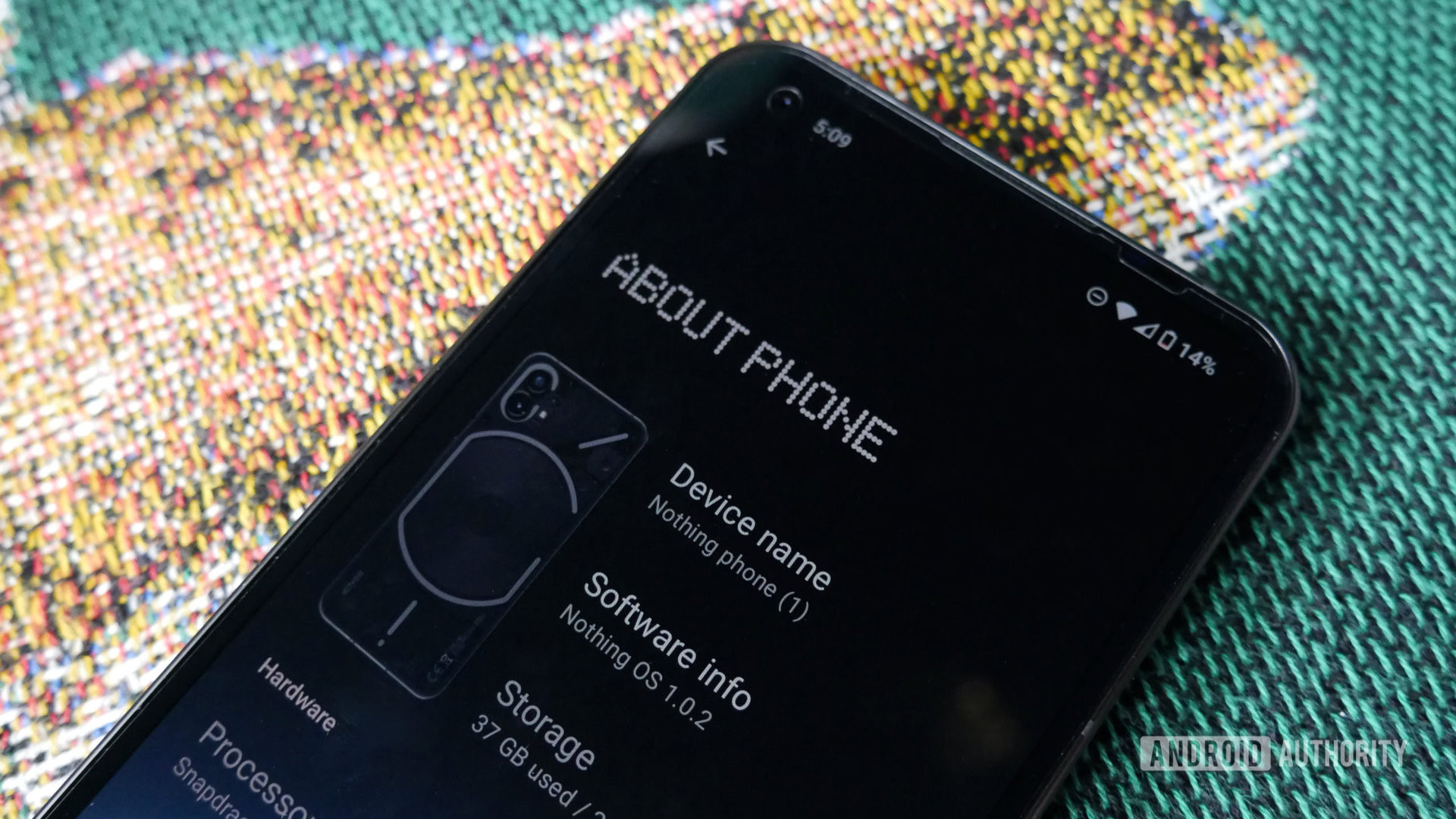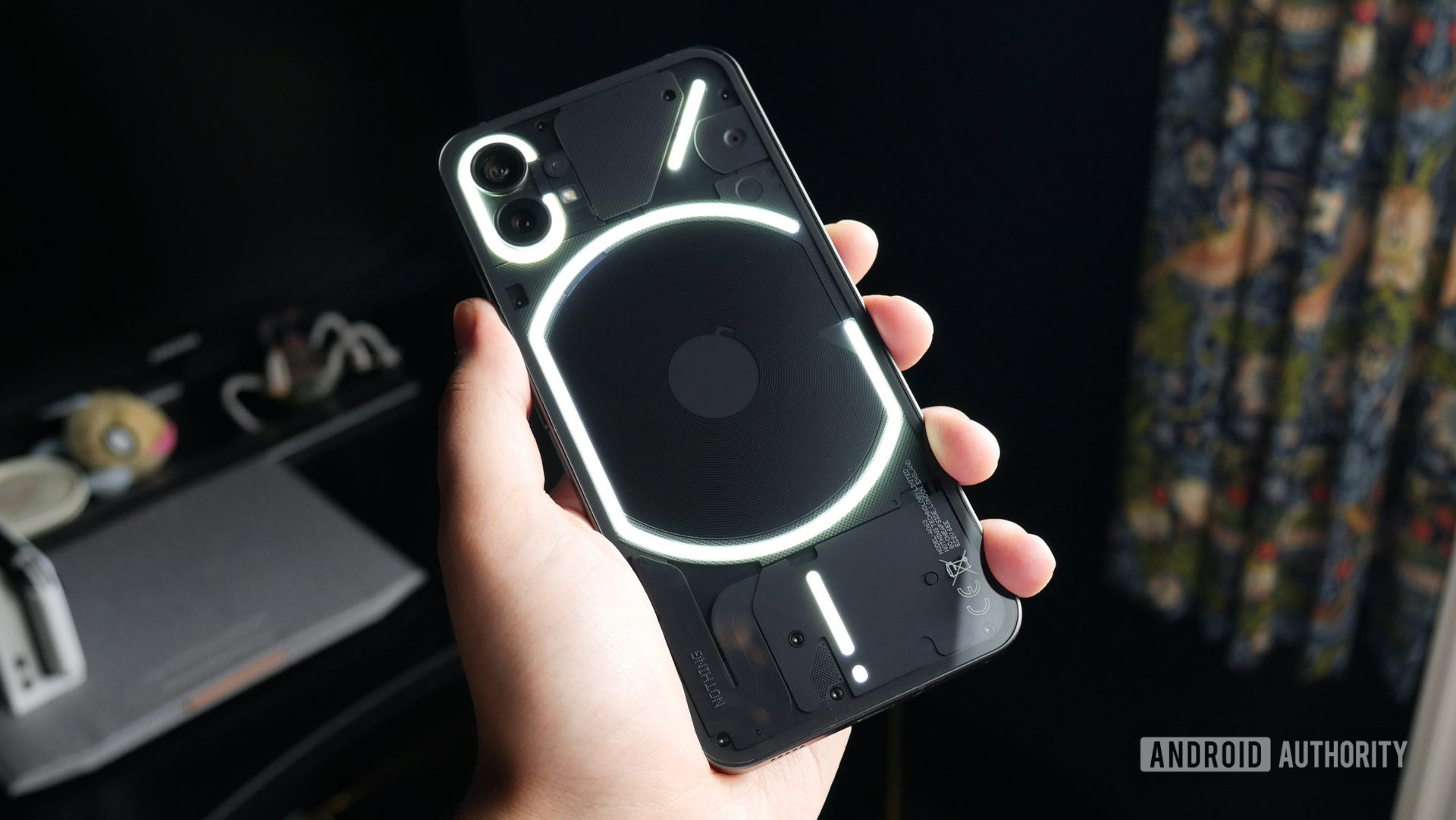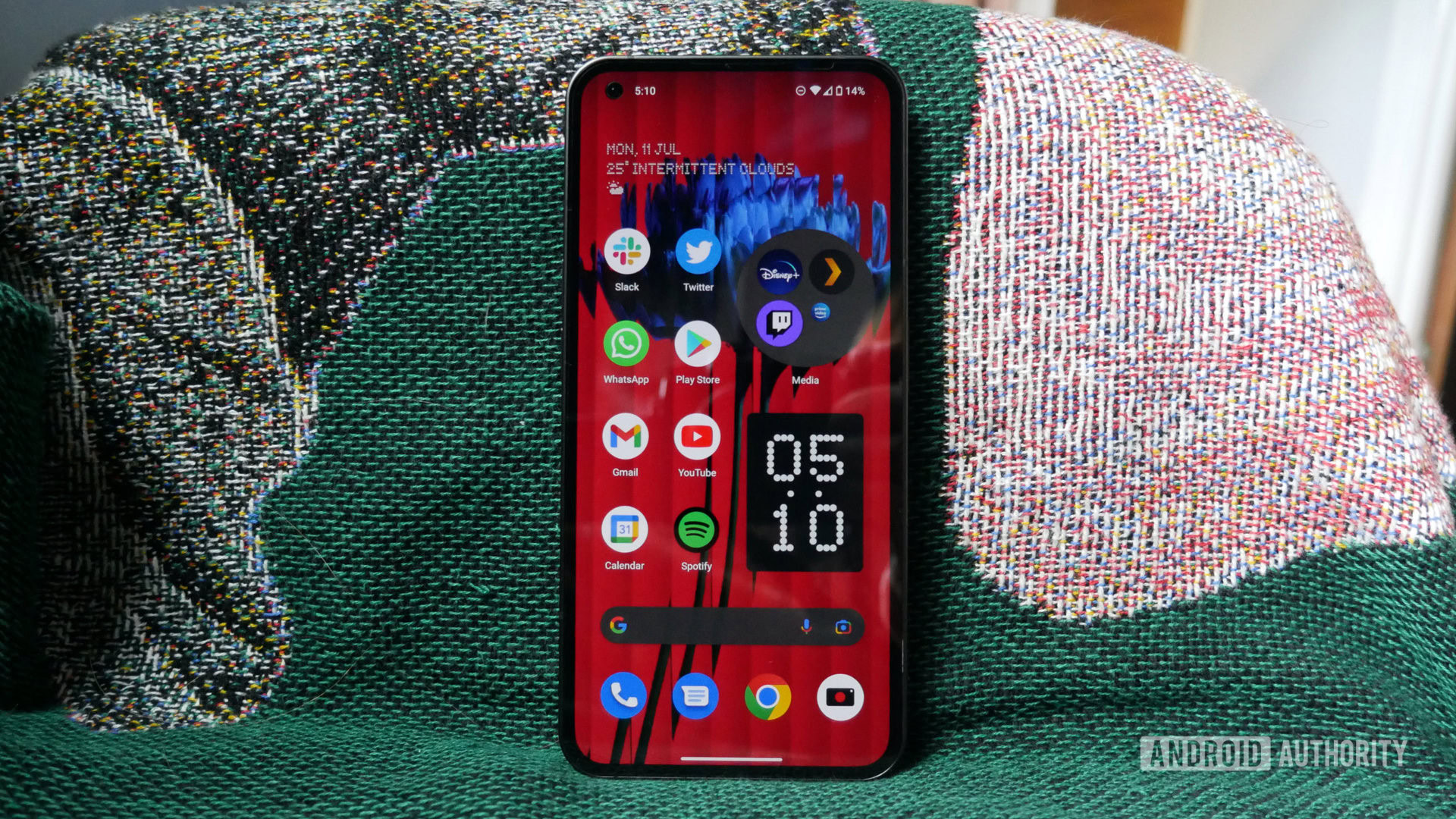Affiliate links on Android Authority may earn us a commission. Learn more.
Exclusive: Android 13 is coming to Nothing Phone 1 — here's why it took so long

As I sat down to chat with Carl Pei about some news related to Nothing OS — the software powering his company’s Nothing Phone 1 — I was surprised by how he opened up the conversation. He told me a story about one of the early hires on Nothing’s software engineering team. After a disappointing interview with the developer, Pei told his team, “Please do not hire this person.” However, the team informed Pei that this was the only person who applied, and they needed to bite the bullet. After one day of work, the developer quit, telling Nothing he got a better job elsewhere.
“The worst engineer didn’t even want to work two days for our company,” Pei says with an exhausted laugh.
In this uncharacteristically candid chat, Pei told us about Nothing OS 1.5 and the eventual 2.0, both based on Android 13. We discussed plans for future Nothing phones, the possibilities of launches in the United States, and why iPhone users are really important to Pei.
Nothing OS: Behind-the-scenes problems

To understand why Nothing’s Android skin is already getting an overhaul, you first need to understand how it all started. In the company’s early days, Pei found it difficult to get anyone on board, with the previously mentioned engineering hire a good example. However, the supply chain was also skeptical. “We were constantly challenged and rejected,” he said. “We’d hear things like, ‘There are a lot of earphones on the market, why would we work with you?’ a lot.”
While the success of the Nothing Ear 1 — the company’s first product — helped with those woes, the company still had a staffing problem. “You need a couple of hundred people to build a stable Android build,” Pei explained, “and we were not able to hire all those people in such a short period of time.” When the first beginnings of Nothing OS started, the company only had five permanent engineers on staff.
To get the Nothing Phone 1 out on time, the company needed to outsource hundreds of engineers, which didn't go as planned.
To rectify this, Nothing outsourced engineers from an undisclosed Android smartphone OEM that Pei described as “not doing that well financially.” All in all, there were about 400 engineers working part-time on Nothing OS.
This turned out to be much more challenging than Pei anticipated. “[The outsourced team] hadn’t really done this before,” he said. “They had made their own skins before but they hadn’t consulted with other companies. And since they were working on something that wasn’t their own baby, the motivation was a little bit lower than normal when it came to creating a high-quality product.”
Related: A look at the major Android skins
Still, Nothing needed to barrel ahead to get the Phone 1 out. When it launched this past summer, Pei admits Nothing OS was still “a bit rough.” In our review, we gave the software a 3.5/5 score and said it is “clinical in its simplicity, but tips over the edge into outright anemia.” In other words, there wasn’t much to say about it because there wasn’t much to it.
“Our team tallied all the media reviews [for the Phone 1] together, and I think we had an average score of 8.1 out of 10,” Pei explained. “There were a lot of comments on the software and the camera, which is also software.” Pei wasn’t impressed by this, and knew he needed to attack this problem head-on.
Android 13 and Nothing OS 1.5 and 2.0
When asked about Android 13 — which landed in August right around the launch of the Nothing Phone 1 — Pei admits he’s let some fans down. “I know we’re late on Android 13,” he says. “You can call it an excuse, but we’re late for all the reasons I just mentioned.”
I asked Pei what he would say to a Nothing Phone 1 user if they met in a coffee shop and the user took Pei to task for promising fast Android upgrades but not delivering. “I would have a deeper conversation with that person to understand what it is that makes Android 13 so important to them,” he said. “Some people — especially on the internet — they just complain. But when you start asking them about why, they don’t really have a reason. So what are you really missing? Chasing version numbers is not that important.”
Regardless, Pei is ready to get things back on track. Nothing now has 100 engineers on staff who only work for the company. The primary goal for this team has been to get Android 13 out, which is landing as a public beta today. Anyone who is a member of the Nothing beta program will get it as an OTA over the coming days and weeks (it’s a rolling launch based on IMEI numbers).
'I know we're late on Android 13.'
This update will be known as Nothing OS 1.5, which we can confirm will be available to the public in the first quarter of 2023. This will be a newly-optimized version of the Android skin that will better integrate the software and the hardware, fix bugs, and add new features. Among those new features include a new custom Weather app, improved audio controls in the UI for the volume sliders and a Bluetooth pop-up window, Material You theming, a QR code scanner in quick settings, faster app loading, and more. Besides coming with Android 13, the update is special because it is brand new code. “Closed beta users haven’t noticed because it looks the same as before,” Pei said. “But we secretly swapped in our in-house code for the old codebase from the outsourced OEM. That’s allowed us to make the system smoother and more stable.”
The plan is to run Nothing OS 1.5 for the time being in Nothing’s existing markets. However, people in the US who imported the phone will also get access to the testing program, although there’s no info on when that would happen.
Besides, Nothing OS 2.0 is the main goal. We’re yet to hear what the company has in store for its next full version of Nothing OS, but Pei’s words suggest a more ambitious future. “In the beginning, we were all just focused on delivering a stable piece of software,” Pei explained. “That’s all we really had the bandwidth to do, and even that was a bit challenging for us at the initial release. But now I think we have the time and energy to be more ambitious.”
Why iPhone users are so important

“Some people have criticized the Nothing Phone 1 for being too similar to the iPhone, design-wise,” Pei says with a sigh. “I don’t agree, and I explain in my iPhone review video why.” While Pei doesn’t want to admit that the Phone 1 does look a lot like an iPhone, it has only helped with the overall goal: getting iPhone users to switch to Android.
According to Pei, a significant percentage of Nothing Phone 1 users left iOS for it, and that percentage is “three to four times” the average Android conversion rate. In other words, Nothing is getting iPhone users to switch to Android better than most other brands, which is hugely important.
Nothing has proven to be very successful at getting iPhone users to switch to Android.
“If you look at the Gen Z population around the world — and particularly in the US — 87% of them are already on iPhones,” Pei said. “How do we get the young people on Android? Becuase if we don’t, then when they grow up, Android’s share just keeps on shrinking.”
In that sense, Nothing’s design choices are a huge success. “If you want to convert a Gen Z person from iPhone to Android, the design of the phone itself is probably what’s going to convince them,” Pei said. “And once they’re there, they’re there, and you just need to keep them there.” Pei was quick to point out that Nothing’s internal survey data shows that the number one reason people went with the Nothing Phone 1 was because of its design and The Glyph interface.
Nothing phones in the United States and the future

While Pei was surprisingly candid about a lot of these topics, he wasn’t ready to divulge everything. We know that Nothing has been in talks with US-based carriers recently, for example. When pressed on this, Pei went back to his usual guarded responses.
“If we’re going to work with carriers, we need a lot more resources than 100 people,” Pei explained. “[Carriers] have their own testing and their own requirements and our team is just not built up enough to work with them.”
I asked Pei if that means the company will be on a hiring frenzy to get the team ready for what a US launch would require. He gave a fairly vague response: “We’re entering a recession all over the world, so I think we need to balance growth with keeping things safe.”
When it came to talking about the future, Pei kept things close to the chest.
As we wrapped up the conversation, I asked about how Pei feels about the development of Nothing OS and the problems he’s faced. I specifically asked about how this could relate to the early days of his previous company OnePlus, which had similar issues with its software skin (a commercial port of CyanogenMod at the time).
“I told you about the 8.1-out-of-10 number,” Pei said after thinking a moment. “That reputation is stuck in people’s heads. If we had launched and that number was an 8.5 or even a nine, that would have been so much better for our reputation. I think the biggest thing I’ve learned from this is that whatever you ship on launch day has to be really, really solid, because changing that perception later on is difficult.”
“However, if we had another chance, we’d probably still have done it this way,” Pei said with a laugh. “Otherwise, it would have taken so much longer to get a product to the market.”
Correction: This article originally stated that Nothing OS 2.0 would arrive in Q1 2023 with Android 13. This was incorrect, Nothing OS 1.5 will launch in Q1 2023 with Android 13. Nothing OS 2.0 does not have a release window at the time of writing. We apologize for the error.